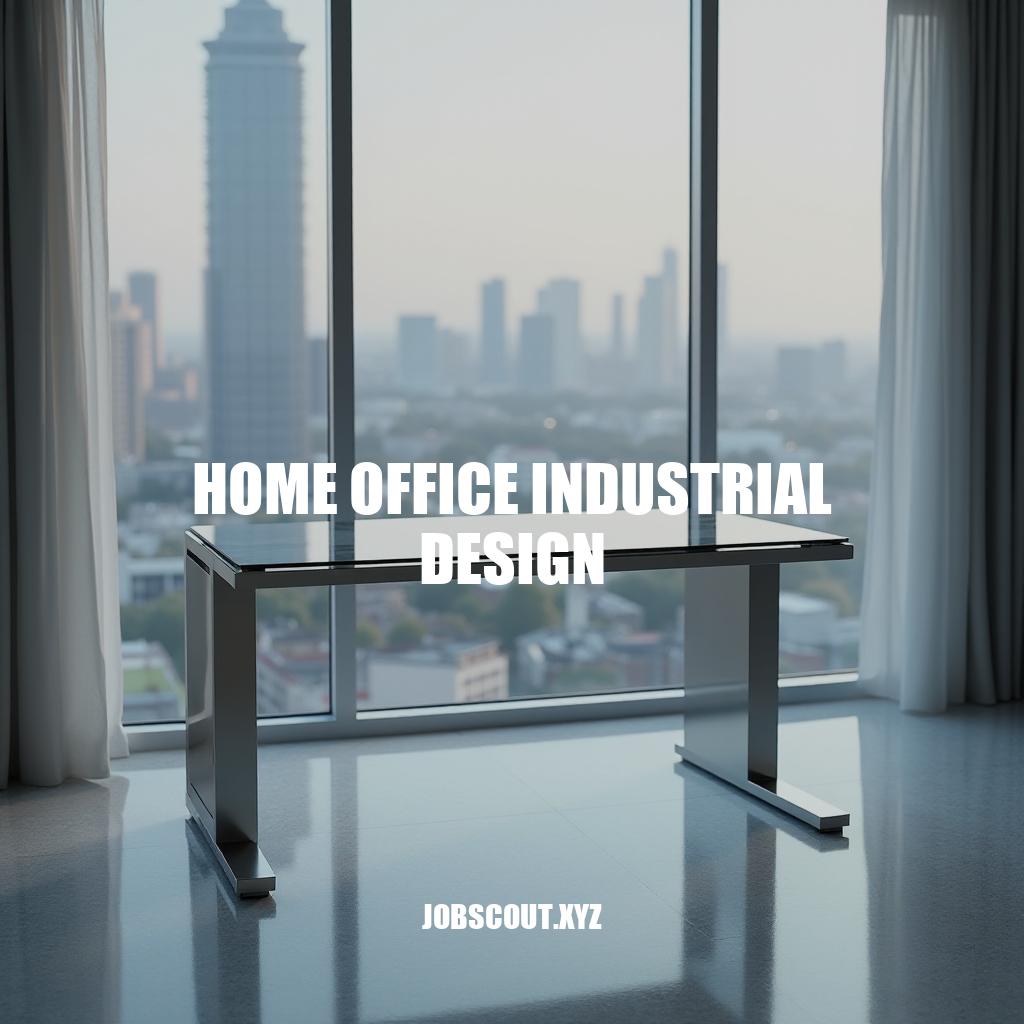
Home office industrial design embraces a raw, unfinished aesthetic that melds function and form. This style typically showcases exposed brick walls, metal fixtures, and reclaimed wood. Its appeal lies in its authenticity and practical elegance, creating an environment that’s both stylish and highly functional.
One major benefit is its flexibility; industrial design elements can be mixed with other styles for a personalized touch. Additionally, it often employs durable, easy-to-maintain materials, making it ideal for busy workspaces. The combination of aesthetic appeal and practicality makes home office industrial design a popular choice for those seeking a unique yet efficient workspace.
Historical Background
Home office industrial design emerged as a distinct category in the early 20th century, paralleling broader trends in industrial and architectural design. The origins can be traced back to the early days of office furniture design, where practicality and efficiency were paramount. The first home offices were often simple, repurposed spaces, with furniture borrowed from other areas of the home.
By the mid-20th century, with the rise of modernist design principles, home office design began to take on a more deliberate and systematic approach.
Designers like Charles and Ray Eames, who were known for their innovative furniture designs, began to focus on creating pieces that were both functional and aesthetically pleasing. The Eames’ work exemplified the integration of ergonomic principles and industrial materials, setting the stage for future developments in home office design.
The 1970s and 1980s saw significant changes with the advent of personal computers. The need for dedicated workspaces in homes became more pronounced, and furniture designs adapted to accommodate new technology.
Desks with built-in spaces for computers and cable management systems became standard, reflecting the growing importance of technology in everyday work life.
In the late 20th and early 21st centuries, the rise of remote work and the gig economy further accelerated the evolution of home office design. Flexibility and modularity became key design principles, with furniture that could easily adapt to different tasks and spaces. Companies like IKEA popularized affordable and customizable home office solutions, making it easier for people to create functional workspaces in their homes.
Today, home office design continues to evolve, driven by advancements in technology and changing work habits.
Sustainable and eco-friendly materials are increasingly used, reflecting broader trends in industrial design. Smart furniture with integrated technology, such as adjustable desks and ergonomic chairs, are becoming more common. The COVID-19 pandemic has also had a significant impact, leading to a renewed focus on creating comfortable and productive home workspaces as remote work became the norm for many people.
The evolution of home office design reflects broader social and technological changes, showing how industrial design adapts to the needs and lifestyles of its users.
From simple, repurposed spaces to highly specialized, ergonomic environments, home office design has continually evolved to meet the demands of modern work life.
Key Elements
Home office industrial design features raw materials like metal, wood, and concrete. Exposed structures, like beams, pipes, and ducts, add a raw, unfinished look. Functional furniture prioritizes usability with pieces like ergonomic chairs, sturdy desks, and ample storage solutions.
Combined, these elements create a cohesive, aesthetically pleasing workspace that blends form and function seamlessly.
Decorating Tips
For a top-notch industrial home office design, aim for a raw, unfinished look while keeping it sleek and functional.
Layout: Open spaces are key; go for minimal partitions and maximize natural flow. Position your desk to get plenty of natural light.
Lighting: Industrial fixtures like exposed bulbs, metal lamps, and pendant lights. Task lighting on the desk and warm-toned ambient lighting for evening work.
Accessories: Mix materials—metallics, wood, leather.
Think wire baskets, vintage clocks, and concrete planters. A statement piece like an industrial bookshelf or a leather office chair ties the look together. Rugged and practical.
Case Studies
-
Shipping Container Office by Sige & Honey: This design repurposes a shipping container, incorporating glass cutouts for natural light, wood and tile mixed flooring, track lighting, pendant bulb lighting, shelving, and custom wallpaper.
-
New Orleans Inspired Study by Kristi Spouse Interiors: Custom-built desk with stainless steel countertops, iron supports, and reclaimed wood, complemented by blue painted built-in cabinetry, brick fireplace surround, and industrial lighting.
-
Urban Concrete Floor Home Office by Naiztat + Ham Architects: Located in New York, this office features a concrete floor, freestanding desk, and industrial-style lighting, creating a sleek and functional workspace.
-
Mid-Sized Urban Freestanding Desk by K+K Interiors: In Moscow, this design includes a mid-sized urban freestanding desk with laminate flooring, gray walls, and orange accents, offering a modern industrial look.
-
Studio Vosgesparis in Amsterdam: This workspace features an industrial freestanding desk, gray flooring, and white walls, providing a clean and minimalist aesthetic.
-
Recycled Container Home by Patrice Rios Design: This renovation uses a shipping container with glass cutouts, wood and tile mixed flooring, track lighting, pendant bulb lighting, shelving, and custom wallpaper.
-
French + Tye Urban Built-In Desk by MW Architects: In London, this design includes a built-in desk with dark wood flooring and white walls, blending industrial elements with a touch of elegance.
-
Studio by Desiree Vosgesparis: Located in Amsterdam, this studio features an industrial freestanding desk, gray flooring, and white walls, creating a cohesive and inspiring workspace.
-
Large Urban Freestanding Desk by Trilogy Cabinets & Design: This office in Other features a large urban freestanding desk, concrete flooring, and beige walls, offering a spacious and functional environment.
-
Bespoke Finish Montpellier Panel by Turgon Flooring: This panel can be used in either classic or industrial interior designs, providing a versatile and stylish option for home offices.
Home Office Industrial Design: A Blend of Function and Form
Home office industrial design combines function and form, featuring exposed brick walls, metal fixtures, and reclaimed wood. Its flexibility allows for mixing with other styles, while durable materials make it ideal for busy workspaces.
The style emerged in the early 20th century, influenced by modernist design principles and the rise of personal computers. Today, it continues to evolve with advancements in technology and changing work habits.
Key Elements of Industrial Home Office Design
- Raw materials like metal, wood, and concrete
- Exposed structures
- Functional furniture prioritizing usability
To achieve a top-notch industrial home office design, aim for an open layout, industrial lighting, and mixed materials. Accessories can include wire baskets, vintage clocks, and concrete planters.
The Benefits of Industrial Home Office Design
- Authenticity
- Practical elegance
- Adaptability to different tasks and spaces


